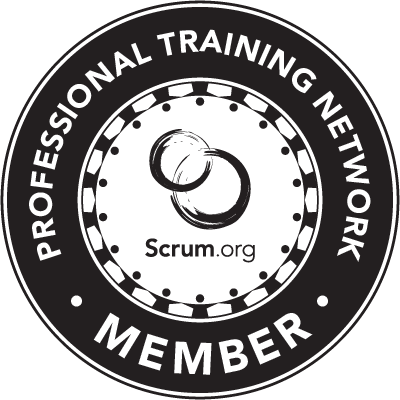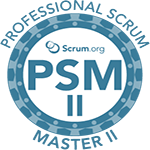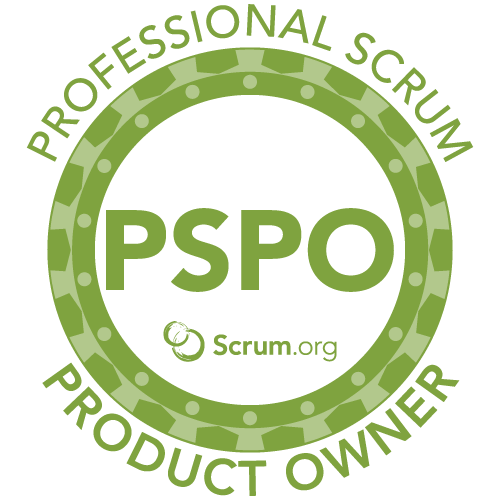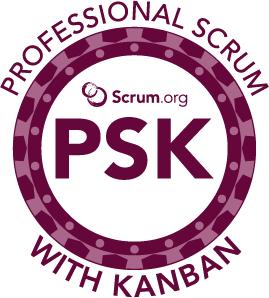-
Agile
Agile is a way of working that particularly adds value in unpredictable situations related to product development. So where you have uncertainty, in what you want to develop and / or how to do the development. In 2001 we started linking the word Agile to software development. We started applying the Lean principles, which were very successful in producing cars at Toyota, to software development. Read more.
-
The 11 most frequently asked questions about Agile, Scrum, SAFe, Agile Project Management, PRINCE2 Agile and DevOps training.
We are often contacted and get many questions about courses that deal with Agile, Scrum, SAFe, Agile Project Management, PRINCE2Agile, the Scaled Agile Framework (SAFE) and DevOps. Reason to make a top 10 of the most frequently asked questions, and of course the answers.
1.What is Agile?
Agile is a way of working that particularly adds value in unpredictable situations related to product development. So where you have uncertainty, in what you want to develop and / or how to do the development. In 2001 we started linking the word Agile to software development. We started applying the Lean principles, which were very successful in producing cars at Toyota, to software development. 17 gurus described this new way of working in the Agile Manifesto. This Manifesto is supported by 12 principles. Working in an Agile way means that you comply to all of these 12 principles. Nowadays we not only apply the 12 principles to software development, but to product development in general.
2.What is Scrum?
Scrum is a framework for the development and maintenance of complex products. Scrum has been described by Ken Schwaber and Jeff Sutherland in the Scrum Guide. Scrum was one of the frameworks that have been at the basis of the Agile Manifesto. Or vice versa: Scrum is one of the ways to apply the general concept of Agile. Scrum focuses on the situation "one team, one mission". Where the mission is to (further) develop a product. Scrum does so in Sprints: time periods of one week to one month in which a working product increment is made. At the beginning of a Sprint the team plans the work for the Sprint (Sprint Planning). During the Sprint the team meets on a daily basis to discuss progress (Daily Scrum). At the end we focus on the product that has been realized during the Sprint (Sprint Review) and on improving our process and way of working (Sprint Retrospective). A Scrum Team consists of a Product Owner (focus on the "what"), a Development Team (focus on the "how") and a Scrum Master (focus on the "process").
3.Which Scrum-training to choose?
According to the authors of the Scrum Guide, Scrum is lightweight, simple to understand, but extremely difficult to master. In the mastering we will help you.
If you have (almost) no Scrum knowledge and you want to get an overview of it in one day and you do not need certification, then we advise you to start with our one-day classroom training Scrum Master.
Would you like to start working as a (certified) Scrum Master or Scrum Product Owner, then you have a choice between two kinds of courses: those from Capgemini Academy itself or those from Scrum.org, the creators of Scrum. Both alternatives prepare for the Professional Scrum Master level I or Professional Scrum Product Owner level I assessment of Scrum.org. And with both alternatives you receive a code which you can use once to take the related assessment. Please see question 4 for more details.
Do you already have practical experience as a Scrum Master and would you like to grow further and professionalize, take a look at our Professional Scrum Master level II or Professional Agile Leadership - Essentials courses.
If you have a group of people to be trained and you have specific training needs, of course we can together design a custom training program!
4.What are the differences between the Scrum Master and the Scrum Product Owner courses?
In the table below we show you the main differences between the Capgemini Academy courses and the Scrum.org courses for Scrum Master and Scrum Product Owner.
Capgemini Academy courses
Scrum.org courses
Blended learning:
- one day classroom training
- preceded by our Scrum Basics e-learning and self-study of the Scrum Guide
- followed by practice questions to prepare for the assessment
Two day classroom training
Based on own training materials and delivered by Capgemini Academy trainers
Based on training materials from Scrum.org and delivered by trainers from Scrum.org
Classroom training conducted in Dutch; all training materials and assessment in English
Classroom training conducted in English (unless the trainer and all participants speak Dutch); all training materials and assessment in English
Particularly recommended if you already have some first basic understanding of Scrum and you have no opportunity to attend two days of classroom training
Particularly recommended if you have no prior knowledge of Scrum and you have the opportunity to attend two days of classroom training
More information:
More information:
The courses provided by Scrum.org, the creators of Scrum, are recognizable by the official badges on the training pages.
5.What is SAFe?
SAFe is an abbreviation for the Scaled Agile Framework, the leading framework around business agility. For more information around SAFe and the related courses, please browse to our dedicated SAFe-page.
6.What about managing projects in an Agile environment?
We often come across people who think that executing projects and working in an Agile way are contradictions. But nothing is less true: projects can be executed and managed just fine in an Agile way. But you will need additional practices, especially in addition to Scrum. Because Scrum is not a project management method: Scrum tells you nothing about starting, initiating, managing and closing a project. But above all: Scrum assumes infinite ongoing product development, while a project always has an end, a (usually ‘hard’) deadline. And that has consequences!
For managing projects in an Agile environment, you can choose between two frameworks: DSDM Agile Project Management and PRINCE2 Agile. Luckily the similarities between these frameworks are greater than the differences.
Both frameworks are based on Agile thinking and the 12 principles behind the Agile manifesto. In the classic "devils square” of project managing, both frameworks focus on fixing time, cost and quality and being flexible in scope. And they both keep the distinction between steering, managing and product delivery. For the latter aspect, both frameworks integrate very well with delivery-oriented frameworks like Scrum, Kanban and XP. Finally, for both frameworks you can certify through an exam.
7.What are the differences between Agile Project Management en PRINCE2 Agile courses?
In the table below we show you the main differences between the DSDM Agile Project Management and PRINCE2 Agile courses:
DSDM Agile Project Management
PRINCE2 Agile
Based on DSDM terminology
Based on PRINCE2 terminology
Recommended for those who have no current knowledge of PRINCE2
Recommended for those who do have current knowledge of PRINCE2
Has a Foundation level:
- aimed at anyone who is involved in an Agile project
- focuses on theory and basic knowledge
- one day classroom training
and a Practitioner level:
- aimed at project managers
- focuses on applying the theory and on digging in to the details
- two day classroom training
Has a Practitioner level:
- primarily aimed at project managers
- focuses on applying the theory and on digging in to the details
- two day classroom training
for which it is necessary to have current PRINCE2 knowledge prior to training!
If you want to take the PRINCE2 Agile exam, you must hold a PRINCE2 Foundation, IPMA or PMP certification. As an alternative, you can use a digital badge from the AXELOS Professional Development Programme.
More information:
More information:
8.What is DevOps?
DevOps can be seen as a logical continuation of Agile. And because it is a world in itself, we have created a special DevOps page on this topic. There you will also find the training and certifications that we offer. And our DevOps white paper with even more valuable information.
9.What is an Agile or Scrum Coach?
There are all kinds of views around the 'coach' concept. The Scrum Guide indicates that the role of Scrum Master is primarily a coaching role, both for the other roles in the Scrum team and for the 'outside world' around the Scrum team. In that respect, the terms Scrum Master, Scrum Coach or Agile Coach are often used as synonyms. But the term Agile Coach is still mainly used to designate someone who can guide all employees in an Agile transformation. Our Scrum Coach course is the perfect fit for Scrum Masters who want to grow and become a coach.
10. I'm a manager, what should I learn?
The annual State of Devops surveys show that 'transformational leadership' is one of the most crucial success factors for organizations today. Do you want to learn more about the style of management that fits an agile organization? And by means of a certification also show that you have the right knowledge? Then choose the Professional Agile Leadership - Essentials training from Scrum.org. Or for the DevOps Professional - Enable and Scale module from DASA. The Leading SAFe training is also primarily intended for managers.
11. What about the professional knowledge that is always needed in an Agile environment?
No matter in which Agile framework you work, professional skills and competencies are always needed. To further develop yourself, we offer these courses:
- Agile Requirements
- Writing User Stories
- Agile Architecture
- Exploring Agile Testing
- Certified Agile Tester
- Unit Testing
If you have any questions about Agile or if you would like to get in touch with us on this matter, please contact us via the contact form.










